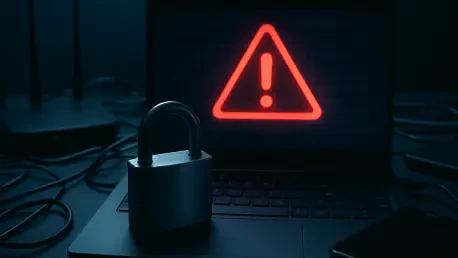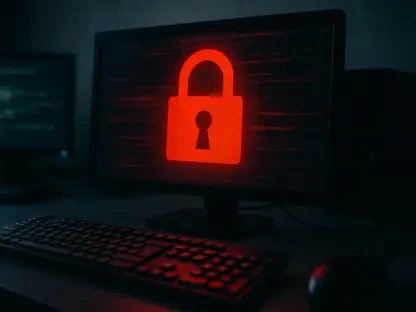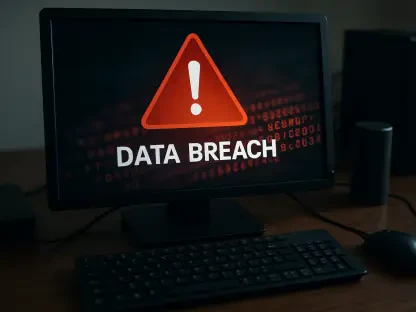Introduction to Cyber Risk Communication
In today’s digital landscape, a staggering reality looms over corporate boardrooms: a single cyber breach can cost millions in losses, tarnish a company’s reputation, and disrupt operations for months, making it imperative to communicate cybersecurity risks effectively to executives and board members who may lack deep technical expertise. Bridging this gap is not merely a technical exercise but a strategic imperative to safeguard the organization’s future.
Effective communication transforms complex cyber threats into actionable business insights, enabling leadership to make informed decisions. When technical jargon is replaced with relatable business impacts, executives can better grasp the stakes involved. This guide explores aligning cyber risks with business goals, simplifying communication for clarity, and fostering collaboration between IT teams and leadership to build a resilient enterprise.
The stakes are high, and the consequences of miscommunication can be catastrophic. Without a shared understanding, organizations risk delayed responses to threats or insufficient investment in defenses. The following sections delve into best practices that ensure cybersecurity becomes a boardroom priority, driving strategic action and protecting long-term value.
The Importance of Bridging the Cyber Knowledge Gap
Cyber risks are no longer confined to the IT department; they represent core business concerns that demand executive attention. Many leaders still view cybersecurity as a technical niche, disconnected from broader organizational strategy. Addressing this misconception is vital to ensure that threats like data breaches or ransomware are recognized as potential disruptors to revenue, customer trust, and regulatory compliance.
Understanding these risks yields significant benefits, including sharper decision-making and enhanced organizational resilience. When executives comprehend the financial and reputational fallout of cyber incidents, they are more likely to champion robust defenses. This alignment helps protect against substantial losses, preserving both market position and stakeholder confidence in an increasingly hostile digital environment.
Moreover, clear communication plays a pivotal role in securing budget and support for cybersecurity initiatives. When leadership sees cyber risks as integral to business continuity, resources flow more readily toward prevention and response measures. This shift in perspective fosters a proactive culture, positioning cybersecurity as a competitive advantage rather than a mere cost center.
Best Practices for Communicating Cyber Risks to Executives
Framing Risks in Business Terms
To resonate with executives, cyber risks must be presented in the context of tangible business outcomes rather than arcane technical details. Instead of discussing malware variants, focus on the potential financial impact, such as downtime costs or ransom payments. Highlight regulatory consequences, like fines for non-compliance, and reputational damage that could erode customer loyalty or investor trust.
A practical approach involves linking specific threats to their business disruptions. For instance, a ransomware attack might halt operations, leading to lost sales, while a data breach could trigger lawsuits and PR crises. Mapping these scenarios to dollar figures or strategic setbacks ensures that executives see the direct relevance to their priorities, prompting swifter action and resource allocation.
This method shifts the conversation from abstract warnings to concrete risks. By emphasizing how a cyber incident could derail a product launch or undermine a merger, IT leaders can secure buy-in for preventive investments. Tailoring the narrative to the organization’s unique goals makes the urgency undeniable, driving home the need for immediate focus.
Case Study: Financial Impact of a Data Breach
Consider the example of a mid-sized retailer that suffered a data breach, exposing customer payment information. The direct costs included forensic investigations and system repairs, amounting to millions. Legal penalties followed, with fines for failing to meet data protection standards, while the loss of customer trust led to a sharp decline in sales over subsequent quarters.
This incident illustrates how a single cyber event can cascade into a business crisis. Beyond immediate expenses, the retailer faced long-term challenges in rebuilding its brand image. Such real-world cases underscore the importance of framing cyber risks in terms executives can quantify, ensuring they prioritize defenses before disaster strikes.
Simplifying Communication Without Losing Depth
Delivering concise updates tailored to executives’ expertise is essential to maintain their engagement without diluting critical information. Avoid overwhelming them with intricate details about network protocols or software patches. Instead, distill complex issues into key takeaways, focusing on what the threat means for the business and what actions are needed to mitigate it.
Visuals, metrics, and analogies can make abstract risks more relatable. A chart showing the rising frequency of cyber incidents in the industry can highlight urgency, while comparing a phishing attack to a deceptive con artist can clarify the danger. These tools bridge the understanding gap, ensuring the message is accessible yet impactful for strategic planning.
Balancing brevity with substance requires careful preparation. Summarize the risk landscape in a few clear points, such as potential losses or response timelines, while being ready to elaborate if questions arise. This approach respects executives’ time constraints while equipping them with the insights needed to steer the organization safely through digital threats.
Example: Using Metrics to Quantify Risk
A technology firm successfully used data-driven dashboards to communicate the severity of phishing attacks to its leadership. By displaying metrics like the percentage of employees clicking malicious links and the estimated cost of a successful breach, the IT team made the threat tangible. This visual clarity led to rapid approval for a comprehensive security training program.
Such quantifiable evidence transforms vague concerns into urgent priorities. Executives could see not just the likelihood of an attack but its potential to disrupt operations or drain budgets. This method of communication empowers decision-makers to act decisively, reinforcing the value of investing in proactive measures over reactive fixes.
Fostering Ongoing Dialogue and Collaboration
Regular communication is critical to keep executives informed and prepared for evolving cyber threats. Monthly briefings or quarterly risk assessments ensure that leadership stays updated on emerging dangers and mitigation strategies. This consistent engagement prevents cybersecurity from becoming an afterthought, embedding it into routine strategic discussions.
Scenario planning further strengthens preparedness by simulating potential cyber incidents. These exercises allow executives to experience the decision-making pressures of a breach or attack, identifying gaps in response plans. Such proactive steps build confidence in the organization’s ability to handle crises, aligning IT and business perspectives on risk management.
Building trust between IT teams and leadership is equally important. Joint strategy sessions where both sides discuss priorities and challenges foster mutual understanding. When technical experts and executives collaborate on shared goals, such as protecting customer data or ensuring uptime, cybersecurity becomes a unified mission rather than a siloed concern.
Real-Life Example: Scenario Planning Success
A financial institution conducted cyber incident simulations involving its executive team, walking through a mock ransomware attack. The exercise revealed communication bottlenecks and unclear roles during a crisis, prompting immediate improvements. When a real breach occurred months later, response times were significantly faster, minimizing damage.
This case demonstrates the power of hands-on preparation. By engaging leadership in realistic scenarios, the institution not only refined its incident response but also built a culture of readiness. Executives gained firsthand insight into cyber challenges, strengthening their commitment to ongoing dialogue and resource support for security initiatives.
Final Thoughts and Recommendations
Looking back, the journey of aligning cybersecurity with business strategy through effective communication has proven transformative for many organizations. The emphasis on framing risks in business terms, simplifying complex threats, and fostering collaboration paved the way for stronger defenses. These efforts shifted cybersecurity from a technical footnote to a boardroom priority, ensuring better protection against digital threats.
Moving forward, organizations should start with small, focused briefings to introduce executives to cyber risks, gradually building a culture of security awareness. Targeting industries like finance or healthcare, where risks are particularly acute, can yield the most immediate impact. Balancing the cost of new tools with the potential for risk mitigation remains a key consideration for sustainable investments.
As a next step, leadership teams are encouraged to integrate cybersecurity into annual strategic planning, treating it as a core driver of business continuity. Partnering IT experts with executives for regular updates can further solidify this alignment. By taking these actions, companies can anticipate and neutralize threats, securing their future in an ever-evolving digital landscape.









